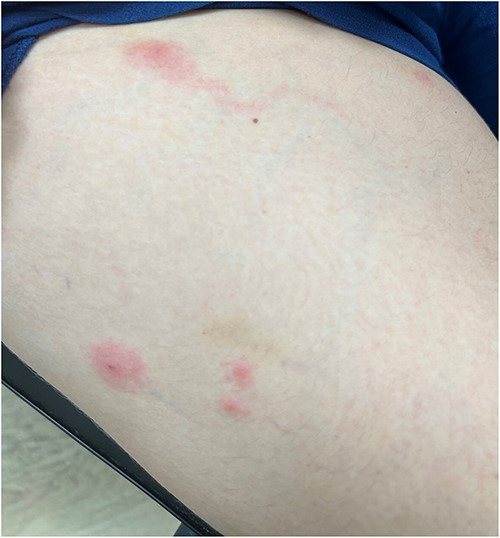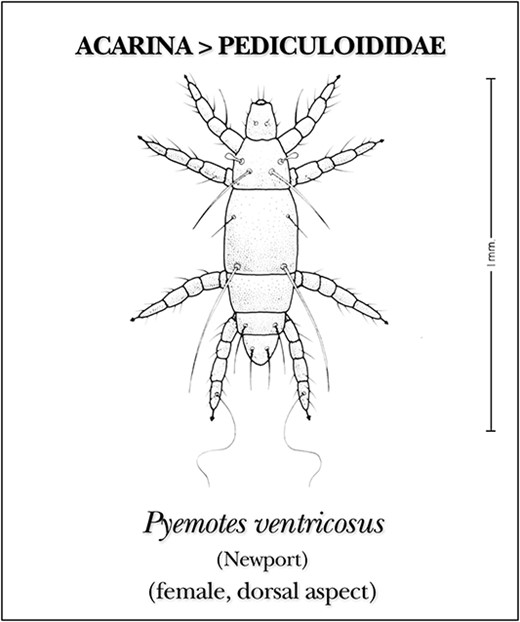-
PDF
- Split View
-
Views
-
Cite
Cite
Natalia Rodriguez-Valero, Leire Sarasola Balerdi, Isabel Vera, Teresa de Alba, Meritxell Saloni, Daniel Camprubí-Ferrer, A skin comet sign after a trip to the Gambia, Journal of Travel Medicine, Volume 31, Issue 3, April 2024, taad162, https://doi.org/10.1093/jtm/taad162
Close - Share Icon Share
Clinical pearls
A 34-year-old aid worker observed a comet-like skin lesion on her right thigh 1 week after returning from Kombo, The Gambia. As a logistics and management humanitarian worker, she conducted a short field trip from 4 to the 11 August 2023 to follow up on the projects. During her stay, she resided with the local population avoiding excursions or trekkings in the region. She did not take malaria prophylaxis but was vaccinated 2 years ago for meningitis and yellow fever.
Upon her return, our Department of Tropical Medicine followed her up due to a traveller’s diarrhoea. On the 20 August, 9 days after her return, she exhibited five pink, pruritic macules with a dark spot at the centre on her right thigh, one featuring a serpiginous tract (Figure 1). A comet sign led to a presumptive diagnosis of Pyemotes spp. dermatitis. The patient denied handling old furniture, recent house moving, handling logs, or staying in old houses or cabins. However, she brought a dusty old book from Kombo, a rural area in The Gambia, and began reading it 24 hours before the onset of symptoms. She fully recovered after a 7-day course of antihistamines.

Differential diagnosis excluded larva migrans or currens as lesions did not migrate and resolved spontaneously within a week. Erysipelas or Lyme disease were also ruled out due to the absence of systemic symptoms and inflammatory signs. The patient reported no sightings of Paederus spp. or other arthropods, and the bites were painless. Despite the potential for other arthropod bites, the characteristic comet sign supported the Pyemotes spp. diagnosis.1
Pyemotes spp. (Figure 2) are mites globally infesting furniture beetles and can be found in logs, herbs, or dust. Dermatitis from these mites typically emerges 24 hours after exposure, in outbreaks and especially during European summers.2,3 While the likelihood of the infestation occurring in Europe cannot be completely dismissed, our hypothesis suggests a dusty old book read 24 hours before symptoms as the probable source.

Pyemotes dermatitis may be misinterpreted as other tropical skin diseases, such as larva migrans, bacterial infections or other arthropod bites. The distinctive comet sign4 facilitates a prompt diagnosis, preventing unnecessary treatments, as Pyemotes dermatitis resolves with symptomatic treatment.
Author contributions
Natalia Rodriguez-Valero (Conceptualization-Lead, Writing—original draft-Lead, Writing—review & editing-Equal), Leire Balerdi-Sarasola (Writing—review & editing-Equal), Isabel Vera (Writing—review & editing-Supporting), Tessa De Alba (Writing—review & editing-Supporting), Meritxell Saloni (Writing—review & editing-Supporting), Daniel Camprubí-Ferrer (Writing—review & editing-Supporting).
Funding
None.
Conflict of interest
None declared.



